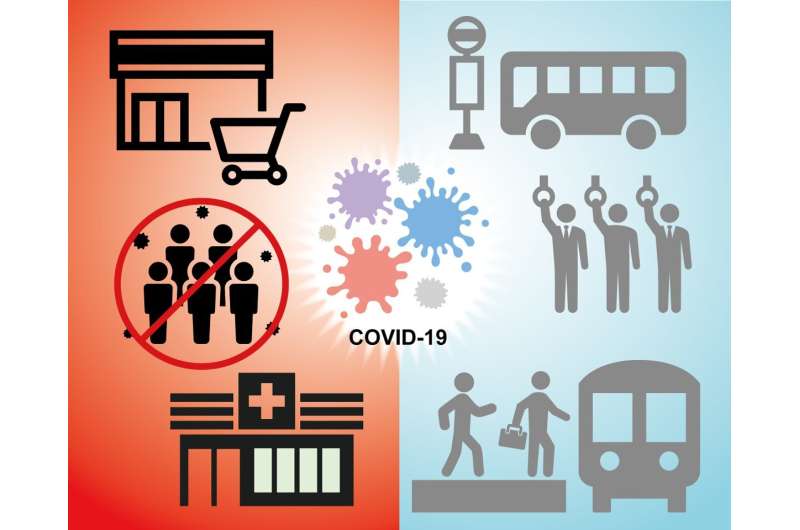Is there a relationship between COVID-19 infections and everyday human mobility in metropolitan areas?

More than two years have passed since the first outbreak of COVID-19, and infection rates continue to change as new strains emerge. Many aspects of COVID-19—especially the long-term effects—remain unknown, so continued infection prevention measures are essential.
Osaka Metropolitan University researchers, Assistant Professor Haruka Kato and Professor Atsushi Takizawa of the Graduate School of Human Life and Ecology, conducted a time series analysis of human mobility to explore how lifestyle changes could lower COVID-19 transmission, while maintaining social and economic activities. They found that controlling people's mobility in specific areas according to infection levels—rather than uniformly restricting all human mobilities—could be effective in reducing the number of new COVID-19 infections.
The researchers performed two time-series cross-correlation analysis; the first examined the total distance traveled daily by residents of Ibaraki City and the number of COVID-19 infections in the area, from January 2020 to July 2021. Ibaraki City is a typical suburban city in the Osaka metropolitan area, located between Osaka City and Kyoto, with a population of approximately 280,000. Due to Ibaraki City's extensive train network, many residents commute to either of the larger business centers, which takes approximately 30 minutes.
When the first state of emergency was declared—from April to May 2020—the total distance traveled by residents of Ibaraki City decreased and did not significantly change afterward, except during consecutive holidays. Furthermore, a small positive correlation between the total distance traveled and the number of COVID-19 infections was observed, with the strongest correlation between them when infections were set to lag six weeks behind the total distance traveled.
This study clarified the distance the residents traveled only had a weak relationship to the number of infections, although prior research that analyzed the early-stage period clarified a strong correlation. The result suggests that other factors such as mask use, contact infection by droplets, and ventilation may have an impact on the number of new infections. The results of the Ibaraki City analysis were published in PLoS ONE on September 1, 2022.
The second analysis examined the types of places people visited during the pandemic—including grocery stores and pharmacies, parks, workplaces, residences, retail stores, and using public transit—and how visiting these locations related to the total number of people infected over a 2-week period. The study covered three adjoining prefectures—Osaka, Kyoto, and Hyogo—from March 2020 to September 2021, and showed a strong relationship between the number of COVID-19 cases and amount of visitors to grocery stores or pharmacies, as well as parks, and a weak relationship to using public transportation. These results were published in npj Urban Sustainability.
Both studies suggest that human mobility may only need to be restricted in specific areas depending on the state of the pandemic to be effective in reducing the number of new COVID-19 infections. "Together, these results are important because they show it is possible to maintain social and economic activities while taking measures against coronavirus infections," Professor Kato said. "They also suggest the need for walkable cities, where people can live without cars by taking public transit, in preparation for living in a post-pandemic world where the new coronavirus is still present."
More information: Haruka Kato et al, Time series cross-correlation between home range and number of infected people during the COVID-19 pandemic in a suburban city, PLOS ONE (2022). DOI: 10.1371/journal.pone.0267335
Haruka Kato et al, Human mobility and infection from Covid-19 in the Osaka metropolitan area, npj Urban Sustainability (2022). DOI: 10.1038/s42949-022-00066-w



















